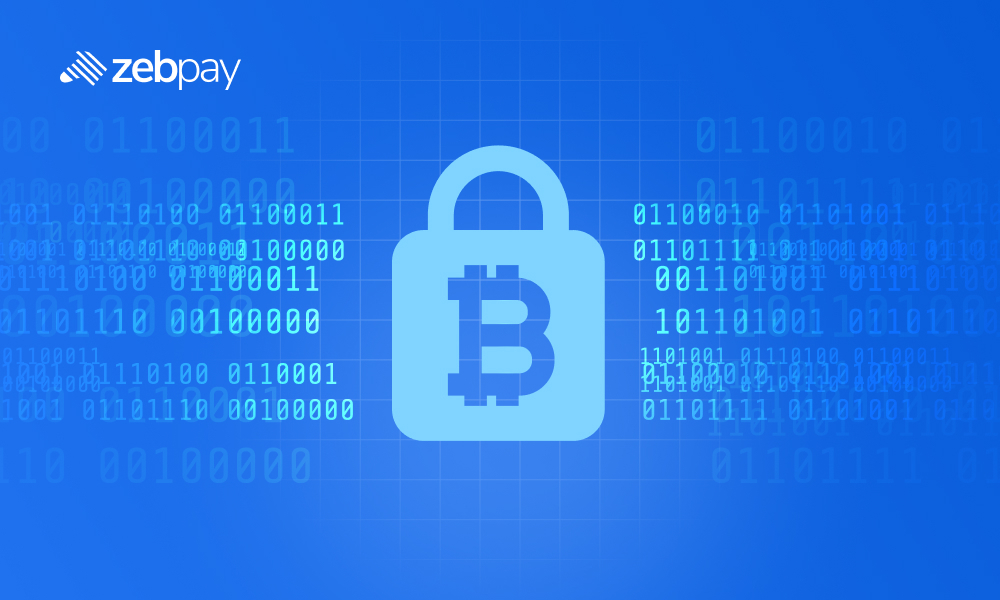Cryptography forms the foundation of crypto’s security — powering its peer-to-peer framework and enabling decentralization, privacy, and trust. In this piece, we dive into the fascinating world of cryptography to uncover how this powerful technology keeps the crypto ecosystem secure and functional.
What is Cryptography?
Cryptography has come a long way from simple hidden messages and playful secret codes. Today, it stands as a sophisticated science dedicated to protecting information from unauthorized access.
In our highly digital world, cryptography plays a role almost every time data moves across the internet. Before information is sent, it’s converted into an unreadable form known as “ciphertext.” Only someone with the correct decryption key can convert it back, ensuring that sensitive data stays private during transmission.
Within the world of crypto assets, cryptography is the foundation that keeps the entire system secure. It verifies transactions, protects user identities, prevents the same coin from being spent twice, and enables a decentralized financial network to function without the need for banks, governments, or any central authority.
Cryptographic Methods Used In Crypto Assets
Crypto assets use several customized variations of three main cryptographic methods to ensure safety and integrity:
Symmetric Encryption Cryptography
This is simple, relatively easy to crack, and therefore minimally used in core applications. In this, the exact same code has been used to encrypt and decrypt the data, and both parties have copies of the same cipher. It means that any eavesdropper cannot know what the message says. However, if they really wanted to crack the cipher, they’d only have to crack one. To add another layer of complexity, asymmetric encryption is used.
Asymmetric Encryption Cryptography
This algorithm uses a pair of keys, one to encrypt and another to decrypt. This way, senders and recipients do not need to share the cipher with one another. Instead, an algorithm creates a pair of keys and sends one key each to the sender and recipient. The sender can only encrypt it and the recipient can only decrypt it.
Hashing
Cryptographic hash functions are complex mathematical algorithms that are used to encrypt data in such a way that it cannot be reverse-engineered. This is especially useful to convert private keys into public keys and to verify that public keys and private keys are paired. Crypto transfers rely heavily on public key encryption, which is a form of asymmetric encryption cryptography, and on hashing to ensure the integrity of the keys.
Public Key Encryption
In this system, information is encrypted using a public key that anyone can access, but decrypting it requires a corresponding private key, which is kept secret. The process works in reverse as well—data encrypted with a private key can only be unlocked using the matching public key. These keys aren’t ordinary passwords; they are long, complex strings of numbers and letters, making them virtually impossible to guess. While public keys can be shared freely, private keys must always remain secure and confidential.
An Analogy
Picture sending a locked container to someone—but instead of locking it with your own padlock, you use one they’ve given you. They’re the only person with the matching key, so whatever you place inside stays confidential. That’s how a public key works: it’s available for anyone to encrypt information meant for you, but only your private key can open and read it.
Cryptography goes further than protecting secrecy—it also proves identity. Using your private key, you can attach a unique digital signature to a message. Anyone with your public key can check this signature and be certain that the message hasn’t been altered and genuinely came from you.
By combining public-private key pairs with digital signatures, modern systems can deliver communication that is secure, verifiable, and reliable—even across the open internet.
How Does Cryptography Support Crypto?
Cryptography is an elegant solution to ensure that cryptos remain free and fair. Crypto largely uses it for 3 actions:
- Transaction Security
This includes algorithms that ensure data remains confidential, that its integrity is maintained, that it’s origin and legitimacy can be authenticated, and that all of these actions are performed in such a watertight manner that nobody can doubt the data.
- Generation of new currency units
Hugh powered computers mine new coins by solving complex cryptographic equations. These equations verify virtual currency transactions and then add them on the decentralised blockchain ledger to form a public record of crypto transactions.
- Verifying transfers
Since the identity of the sender and recipient are encoded in their public and private keys, which are generated and verified with cryptography, it’s an important tool to verify the authenticity of each transfer.
Conclusion
Cryptography is the core framework behind every digital currency, turning intangible data into something secure, dependable, and resistant to fraud. It works behind the scenes to ensure that every transaction cannot be altered, copied, or forged—effectively converting lines of code into trustworthy digital value.
Jacob Appelbaum once remarked, “One must acknowledge with cryptography no amount of violence will ever solve a math problem.” The quote highlights a fundamental strength of crypto systems: their protection doesn’t come from authority or force, but from mathematical principles that can’t be broken through intimidation or power.
With tools like encryption, hashing functions, and digital signatures, cryptography allows users to participate in a system where trust is built into the technology itself. Each transaction, verification, and update is recorded in a transparent ledger that resists tampering. In the end, the real foundation of crypto isn’t only decentralization—it’s the absolute certainty and security offered by mathematics.







